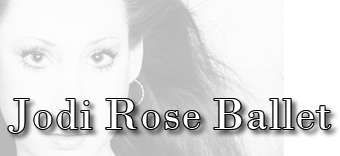The Artist’s Way – Hands
In developing your dancing technique, how often do you think about your hands? Probably not a lot. The hands are such a beautiful expression of line. They are the artistic exclamation point of the arms.
It is said that the eyes are the windows of the soul. The eyes reveal your feelings. You can smile with your face, but your eyes tell us if something else is going on inside. However, it is the hands which either expose your inner tension or reveal your level of freedom and relaxation. They are an important indication of body language and make a strong statement about yourself as a complete dancer.
Unfortunately, the hands are often neglected in the effort to perfect overall technique. While the legs are meant to be like steel, the arms must look like silk. If the focus is predominantly on the legs, it is very easy for the arms and hands to take on too much tension.
How to cultivate harmony of the wrist, the palm, the fingers, even the nails? Study your hands, your fingers. Enjoy their feel, appreciate their sensitivity. Have you ever seen “The Dying Swan” performed? The first time I saw Maya Plisetskya dance this ballet I was moved beyond words. It was the defining moment in my young career. My passion for ballet was unleashed. I knew my destiny was intertwined with dance. My desire to look like that, to feel like that, to be like that, was ignited. Plisetskya appeared to transform her arms and her hands into real wings. From the centre of the ‘wings’ to the tips of her ‘feathers’ there was pure magic. The aliveness of that moment will always remain in my mind.
At the time, I had the privilege of watching Plisetskya dance I was only fourteen years old. I had been selected to perform with the Bolshoi Ballet Company. Did I fully comprehend the magnitude and honour of the whole experience? Like most teenagers, I pretty much took it all in stride. The year was 1968. The place, the grand old Shrine Auditorium in Los Angeles. The company performed “the Ballet School” under the direction of Asaf Messerer. The ballet traces the level of the Russian ballet system through each grade. My role was one of the ‘young and promising’ students in the Russian tradition. The huge bonus was the opportunity to view, up close, a legendary ballerina. My eyes were opened to the possibilities which I enjoy sharing with you.
The arms, the hands, the fingers, are all extensions of the heart. Dancing is about opening your heart and sharing your deepest self. You do it for yourself and for your audience. It is both a selfish and selfless art. If you are striving to capture your audience you must be willing to share your essence, to give every fibre of your being. You may channel your energy through a character (in a story ballet) or through a neo classical piece where the music and movement create their own reality. However, you cannot present a total package without including your hands. They are not static lumps of clay. The hands are part of a living and breathing sculpture which release your power into the infinite universe.
How to begin? First recognise the life and beauty of your hands. They are part of the equipment as a dancer. By simply giving them attention something new will start to happen. Next, feel the electricity flowing through your hands which connect a circuit between your centre, your body and your space.
Here are some exercises to help you get in touch with your hands:
- Place a silk scarf on the floor and experiment picking it up with the utmost grace and sensitivity.
- Sit in a bathtub or a swimming pool and feel your hands moving through the water – study their fluidity, ease and relaxation.
- While using your arms in class work, imagine that each finger has an aura of colour radiating out beyond the physical movement.
- Examine a sculpture of a hand. Some of the great artists, like the Degas drawings, have captured the sensitivity of the hands.
